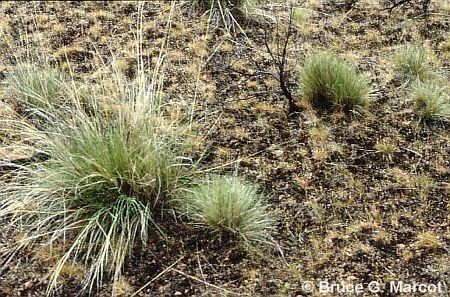Click on the image for a larger version

|
|
Biological Soil Crusts |
|
|
Click on the image for a larger version

|
|
Biological Soil Crusts |
|
Biological Soil Crusts, |
Credit & Copyright: Dr. Bruce G. Marcot
| Explanation:
What's that crunching underfoot? You're walking on a superb example
of a "biological soil crust"
in the high desert of the Crooked
River Grasslands of eastern Oregon.
A biological soil crust is a symbiotic amalgam of cyanobacteria (especially Microcoleus), microfungi, lichens, and mosses that cover undisturbed sandy soils of hot and cold deserts alike. Biological soil crusts have also variously been called cryptogamic, cryptobiotic, microphytic, microfloral, organogenic, and microbiotic soil crusts (whew, talk about aliases). A crust by any name, these living combinations of ancient life forms help to stabilize the soil. More than that, they are critical to fertility of soil in arid regions by fixing carbon and nitrogen, capturing nutrient-rich dust, and stimulating plant growth. They provide the ground work, so to speak, for vascular plants such as shrubs and conifers to take hold. Only recently studied to any degree, soil crusts are terribly vulnerable to disturbance such as from off-road vehicles, agriculture, and livestock grazing, which, in excess, destroys the crusts and their ecological services. Examples of such disturbance can be found in agricultural fields of the inland West, such as in the U.S. Department of Energy's Hanford Site in eastern Washington state. Once disturbed, soil crusts recover only after decades or centuries. This is one reason why protecting native grasslands is important. Another reason is that soil crusts are very sensitive to, and may be good indicators of, climate change. Enjoy the desert. Please tread lightly! Information: Belnap, J. 2003. The world at your feet: desert biological soil crusts. Frontiers in Ecology and the Environment 1(5):181-189.. |
Next week's picture: Matabele Ant Swarm
Member Theme of Taos-Telecommunity